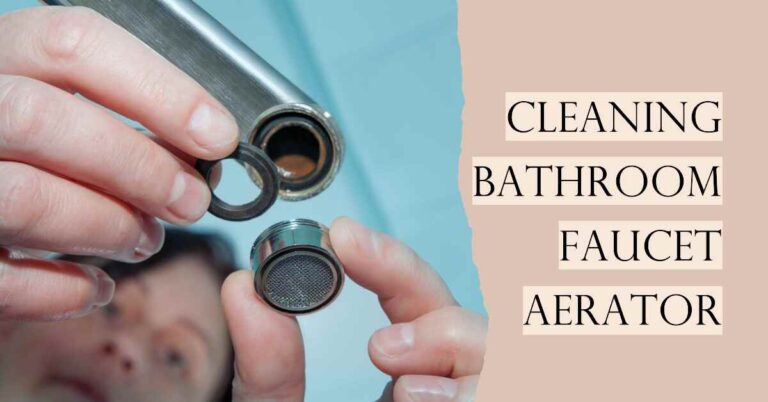The bathroom is one of the most essential rooms in the house, but it can also be one of the most dangerous. According to the Centers for Disease Control and Prevention (CDC), more than 230,000 people visit the emergency room yearly due to bathroom injuries. The bathroom can pose various hazards, such as slips and falls, burns, cuts, electrocutions, infections, and poisoning. In this article, we will discuss the main dangers in the bathroom and how to prevent them.
Slips and Falls
Slips and falls are the most common and serious dangers in the bathroom. They can cause injuries such as fractures, sprains, bruises, concussions, or even death. Slips and falls can happen due to wet or slippery surfaces, loose or uneven tiles, rugs, mats, or cords, cluttered or crowded spaces, poor lighting, or lack of grab bars or handrails.
To prevent slips and falls in the bathroom, you can follow these tips:
- Use non-slip mats or stickers on the floor, especially in the shower or tub area.
- Keep the floor dry and clean. Wipe up any spills or splashes immediately.
- Secure any loose or uneven tiles, rugs, mats, or cords. Replace or remove any damaged or worn-out items.
- Clear any clutter or unnecessary items from the floor or countertops. Store them in cabinets, drawers, or shelves.
- Install adequate lighting in the bathroom. Use night lights or motion sensors for dark areas.
- Install grab bars or handrails near the shower, tub, toilet, or sink. Make sure they are sturdy and well-anchored.
Burns
Burns are another common and serious danger in the bathroom. They can cause pain, blisters, scars, infections, or even death. Burns can happen due to hot water, steam, appliances, chemicals, or fire. Hot water burns are especially dangerous for children and elderly people with more sensitive skin and slower reaction times.
To prevent burns in the bathroom, you can follow these tips:
- Set your water heater temperature to 120°F (49°C) or lower. This can reduce the risk of scalding by hot water.
- Test the water temperature before using it. Use your elbow or a thermometer to check for safety and comfort.
- Turn off and unplug any appliances, such as hair dryers, curling irons, or electric razors when not in use. Keep them away from water sources or flammable materials.
- Use caution when using any chemicals such as bleach, ammonia, or drain cleaners. Wear gloves and eye protection and follow the instructions on the label. Store them in a locked cabinet or out of reach of children and pets.
- Keep a fire extinguisher in or near the bathroom. Know how to use it and when to call 911.
Cuts
Cuts are another common and minor danger in the bathroom. They can cause bleeding,
infection, or scarring. Cuts can happen due to sharp objects like razors, scissors, knives, or glass. Cuts can also happen due to broken or chipped tiles, fixtures, or accessories.
To prevent cuts in the bathroom, you can follow these tips:
- Use a safety razor or an electric shaver instead of a regular razor. Use shaving cream, gel, and a clean blade to reduce friction and irritation.
- Store sharp objects such as scissors, knives, or nail clippers in a closed container or out of reach of children and pets.
- Replace or repair any broken or chipped tiles, fixtures, or accessories. Cover any sharp edges with tape or glue until you can fix them.
- Clean up any glass shards or splinters immediately. Use a broom, a vacuum, or a wet paper towel to collect them. Dispose of them in a sealed bag or container.
Electrocutions
Electrocutions are another rare but serious danger in the bathroom. They can cause shocks, burns, cardiac arrest, or even death. Electrocutions can happen due to faulty wiring, damaged appliances, water contact, or power surges.
To prevent electrocutions in the bathroom, you can follow these tips:
- Check your wiring and outlets regularly. Look for any signs of damage, corrosion, or overheating. Hire a licensed electrician to fix any problems or install any new outlets.
- Use ground fault circuit interrupter (GFCI) outlets in your bathroom. These outlets can detect and stop any electrical currents that may flow through water or a person. They have test and reset buttons that you should use monthly.
- Keep any appliances away from water sources or wet areas. Do not use them near the sink, shower, tub, or toilet. Do not use them with wet hands or hair.
- Use surge protectors for your appliances. These devices can protect your appliances from power surges due to lightning strikes or other causes. They have indicator lights that show if they are working properly.
Infections
Infections are another common and minor danger in the bathroom. They can cause rashes, itching, swelling, pain, or fever. Infections can happen due to bacteria, fungi, viruses, or parasites that may grow or spread in the bathroom. These may include mold, mildew, yeast, staphylococcus, E. coli, salmonella, ringworm, athlete’s foot, and more.
To prevent infections in the bathroom, you can follow these tips:
- Clean your bathroom regularly. Use a disinfectant cleaner and a scrub brush to remove dirt, grime, soap scum, or biofilm from your surfaces and fixtures. Pay special attention to areas that are moist, dark, or warm.
- Ventilate your bathroom properly. Use an exhaust fan or open a window to reduce the humidity and moisture in your bathroom. This can prevent the growth of mold and mildew and improve the air quality.
- Wash your hands frequently. Use soap and water to wash your hands before and after using the toilet, touching any surfaces or fixtures,
- or handling any personal items. This can prevent the transmission of germs and infections.
- Change your linens and personal items regularly. Use clean and dry towels, washcloths, bath mats, bathrobes, toothbrushes, razors, and other personal items in your bathroom. Replace them every week or as needed. This can prevent the accumulation of bacteria, fungi, or parasites on them.
Poisoning
Poisoning is another rare but serious danger in the bathroom. It can cause nausea, vomiting, diarrhea, dizziness, headache, or death. Poisoning can happen due to ingestion, inhalation, or absorption of toxic substances that may be present in the bathroom. These may include medications, cosmetics, cleaning products, or plants.
To prevent poisoning in the bathroom, you can follow these tips:
- Store your medications properly. Use child-proof containers and labels for your medications. Keep them in a locked cabinet or out of reach of children and pets. Follow the dosage and expiration instructions on the label. Dispose of any unused or expired medications safely.
- Store your cosmetics properly. Use containers and labels for your cosmetics. Keep them cool and dry away from sunlight or heat sources. Follow the shelf life and expiration instructions on the label. Dispose of any old or contaminated cosmetics safely.
- Store your cleaning products properly. Use containers and labels for your cleaning products. Keep them in a locked cabinet or out of reach of children and pets. Follow the usage and storage instructions on the label. Dispose of any empty or leaking containers safely.
- Choose your plants wisely. Use non-toxic plants for your bathroom decoration. Avoid plants that may cause allergic reactions, skin irritations, or poisoning if ingested or touched. Some examples of toxic plants are aloe vera, ivy, lily, orchid, and philodendron.
Conclusion
The bathroom can be a dangerous place if you are not careful and aware of the potential hazards that may lurk there. However, you can make your bathroom safer and more enjoyable by following the tips and tricks in this article.
You can prevent slips and falls by using non-slip mats and grab bars; you can prevent burns by setting your water heater temperature lower; you can prevent cuts by using safety razors and repairing any sharp edges; you can prevent electrocutions by using GFCI outlets and surge protectors; you can prevent infections by cleaning your bathroom and washing your hands; you can prevent poisoning by storing your medications, cosmetics, cleaning products, and plants properly.
Following these tips and tricks, you can make your bathroom a safe and comfortable oasis that suits your needs and preferences.


